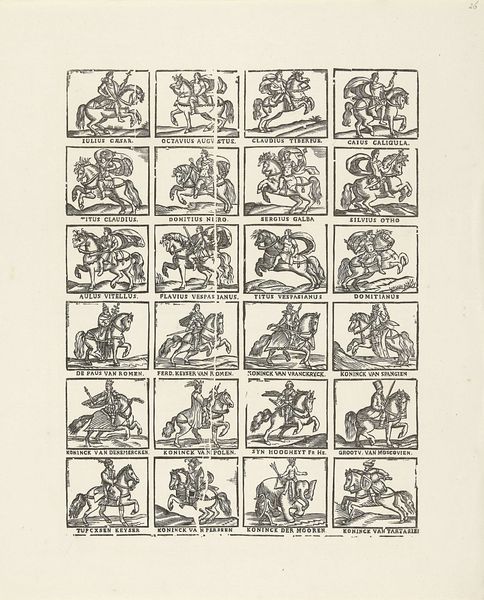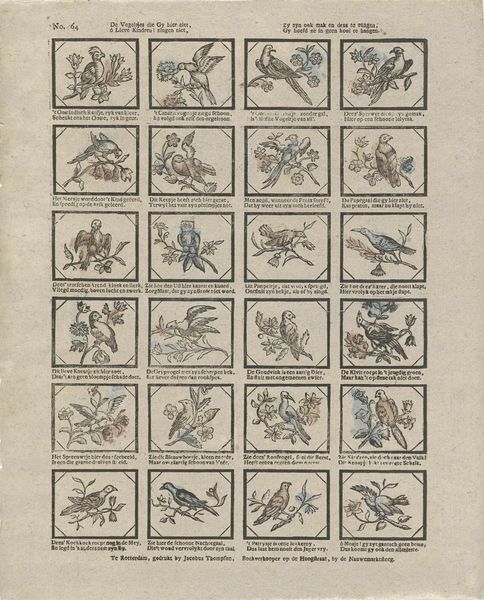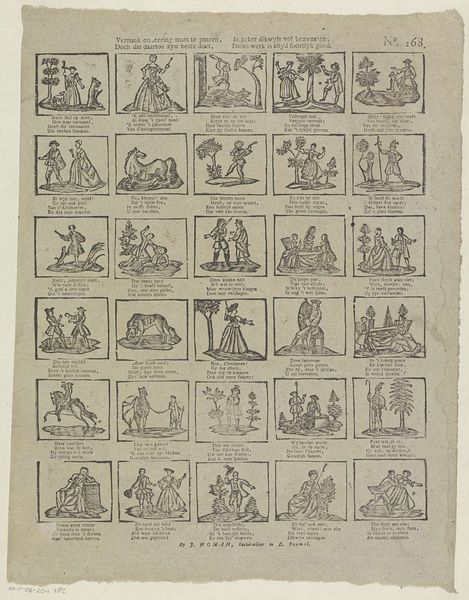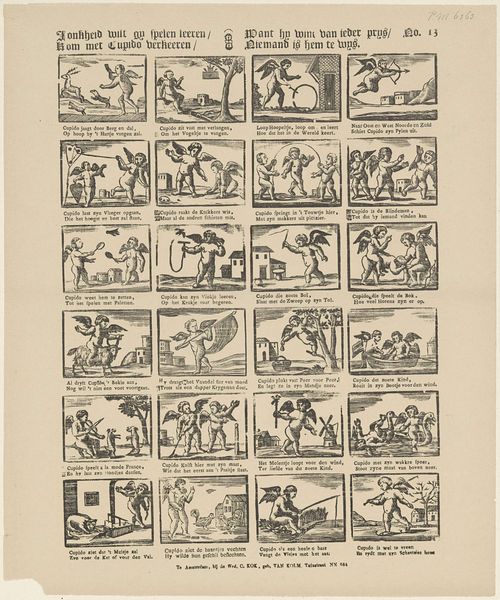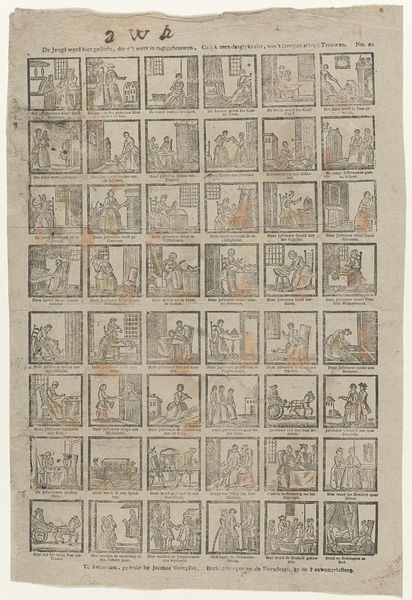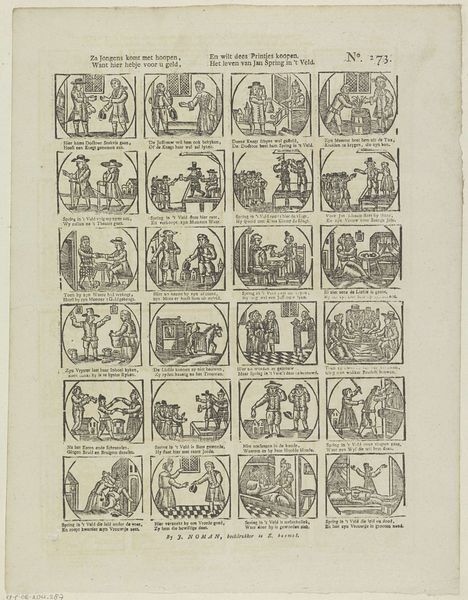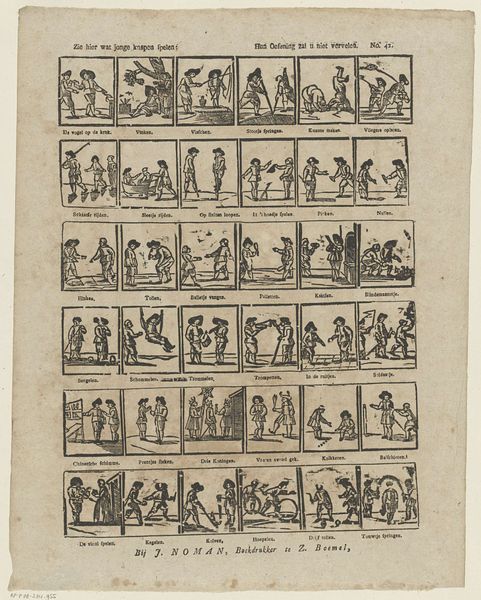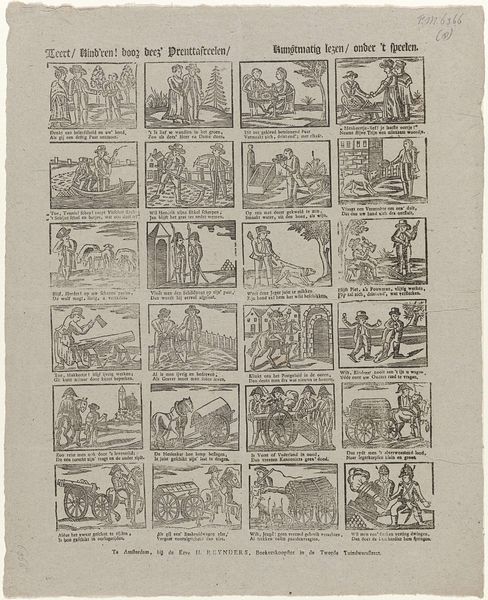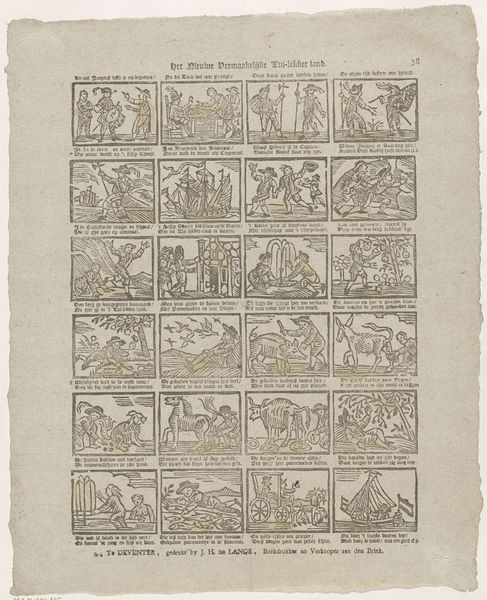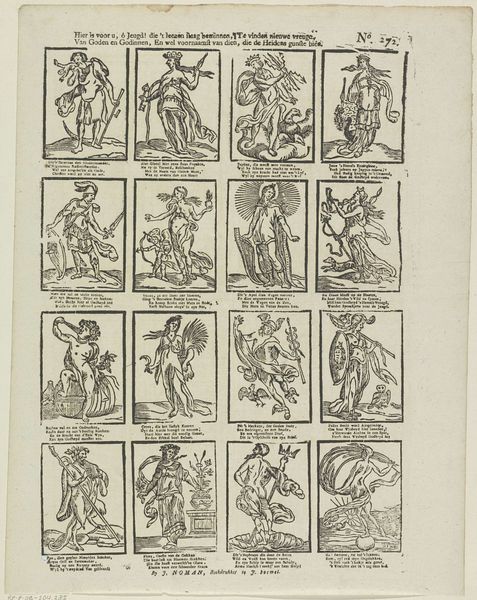
drawing, print, engraving
#
portrait
#
drawing
# print
#
genre-painting
#
history-painting
#
engraving
Dimensions: height 385 mm, width 313 mm
Copyright: Rijks Museum: Open Domain
This print, "Onderscheiden paarde volk," was made by Johan Noman, a book printer from Zaltbommel, The Netherlands, sometime before 1833. It's a woodcut, a relief printing technique where an image is carved into a block of wood, leaving the design raised. Ink is applied to the surface and then transferred to paper. Look closely, and you can see the linear quality of the cuts. The artist skillfully used line and texture to depict different types of cavalry, from the common soldier to the king. Woodcut was relatively cheap and easy to produce, making it a popular choice for printed ephemera during this period. This enabled broad distribution, so even ordinary people could become familiar with the ranks and status of the military elite. The print reflects the social hierarchy of the time, and the widespread interest in military matters. Consider it an early form of mass media, where printing technology allowed for the dissemination of images and information to a broader audience. It blurs the line between art, craft, and propaganda, and offers a glimpse into the social and political landscape of 19th-century Netherlands.
Comments
No comments
Be the first to comment and join the conversation on the ultimate creative platform.
